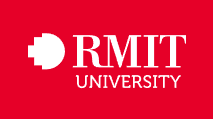Hydrodynamic Lubrication Mechanism and CFD Analysis of Tesla-Valve Microtextures
DOI:
https://doi.org/10.63313/FE.2001Keywords:
Tesla valve microtexture, fluid simulation, femtosecond laser machining, frictional direction, friction and wearAbstract
Titanium alloys are widely used in aerospace and medical industries owing to their high strength, low thermal conductivity and excellent corrosion resistance. However, their high chemical reactivity and poor heat dissipation cause severe tool wear during cutting. Surface microtexturing has been proven to significantly improve the lubrication performance of friction pairs and extend service life. To explore the lubrication mechanism of Tesla-valve microtextures, femtosecond laser machining was employed to fabricate micrometer-scale Tesla-valve structures on YG8N cemented carbide surfaces. A three-dimensional model was established in Fluent, and the velocity and pressure distributions at various inlet flow rates were simulated. The results show that at low speeds (v ≤ 2 m/s), the microtexture exhibits higher reverse than forward flow velocity, with superior reverse hydrodynamic lubrication performance; whereas at high speeds (v ≥ 3 m/s), the forward flow velocity exceeds the reverse, leading to improved forward hydrodynamic lubrication performance. As flow rate increases, the vortex region and pressure potential inside the microtexture expand significantly, enhancing the load-carrying capacity of the oil film.
References
[1] Thomas F, Tomas V, Tomas P. Wear and friction of self-lubricating coatings applied to spur gears in fluid-free aerospace actuation gearboxes[J]. Proceedings of the Institution of Me-chanical Engineers, Part J: Journal of Engineering Tribology, 2024, 238(1): 26-43.
[2] Hamilton D B, Walowit J A, Allen C M. A Theory of Lubrication by Micro irregularities[J]. Journal of Basic Engineering, 1966, 88(1):177.
[3] Qian Jinyuan, Chen Minrui, Liu Xueling, et al. A numerical investigation of the flow of nanofluids through a micro Tesla valve[J]. Journal of Zhejiang University-SCIENCE A, 2019, 20(1): 50-60.
[4] Liu Zhe, Shao Wenqi, Sun Yong, et al. Scaling law of the one-direction flow characteristics of symmetric Tesla valve[J]. Engineering Applications of Computational Fluid Mechanics, 2022, 16(1): 441-452.
[5] Huang Feiya, Ren Liancheng, Xie Shuai, et al. Numerical study of flow characteristics and heat transfer mechanism in Tesla valve tube[J]. Results in Engineering, 2024, 21: 101795-.
[6] Duo Jirenqing, Luo Shanming, Chang Xuefeng. Study on hydrodynamic lubrication and friction reduction performance of cylindrical rolls with tesla valve texture[J]. Tribology Transactions, 2023, 66(6): 981-991.
[7] Xie Zongliang, Zhang Hao, Zhao Bin, et al. Effect of turbulence on lubrication behaviors of a new bearing under bi-misaligned status: Theoretical and experimental study[J]. Mechani-cal Systems and Signal Processing, 2024, 218: 111547-.
[8] Wang Qingyang, Wu Weifeng, Zhang Ping, et al. Analysis of turbulent cavitation effects on water-lubricated bearing in single screw compressors[J]. Industrial Lubrication and Tri-bology, 2024, 76(4): 537-544.
[9] Yin Hang, Yang Jiangang, Gu Qianlei. Numerical study on the hydrodynamic lubrication performance improvement of bio-inspired peregrine falcon wing-shaped microtexture[J]. Tribology International, 2024, 191:109049.
[10] Madaparthi A, Penchaliah R, Sankaranarayanan V. Evaluation of tribological performance in contact pairs by implementing the biomimetic surface textures with lubricant flow us-ing CFD techniques[J]. Industrial Lubrication and Tribology, 2024, 76(5): 639-648.
Downloads
Published
Issue
Section
License
Copyright (c) 2025 by author(s) and Erytis Publishing Limited.

This work is licensed under a Creative Commons Attribution 4.0 International License.





















